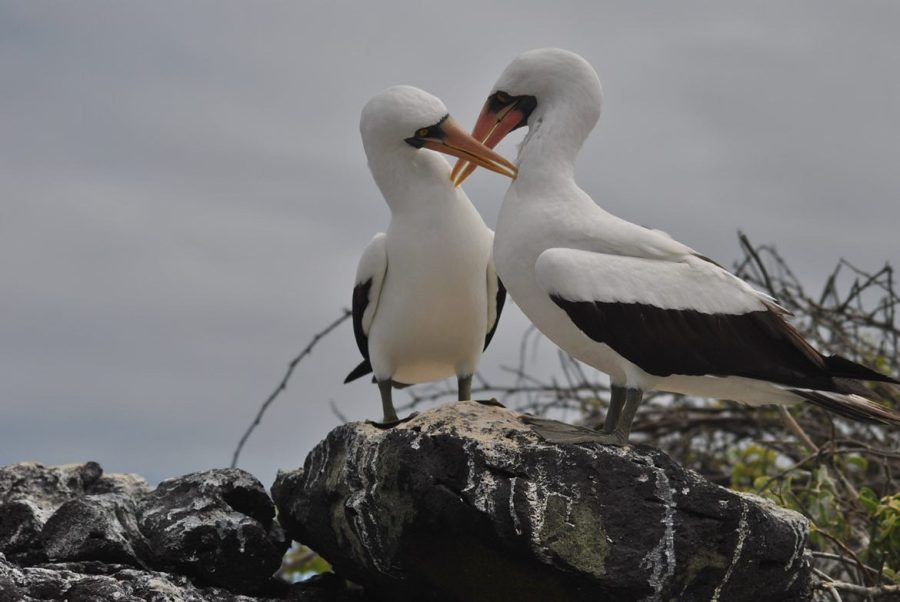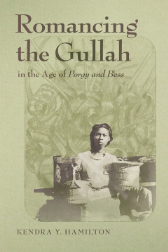A Return to the Galápagos: PC’s Biology Department Visits the Prestigious Islands
Two nazca boobys captured as they meet in their nesting area.
September 19, 2022
In May, the Biology department at Presbyterian College attended their annual trip to the Galápagos Islands, with Dr. Michael Rischbieter and Dr. Jim Wetzel leading the charge.
The 14-day, 13-night visit explored San Cristobal, Santa Cruz, Floreana, and Isabela Islands before heading back to San Cristobal to return to the United States.
Their activities in the island mostly consisted of tours of beaches and hikes around the islands, as well as visiting educational centers, which included the famed Charles Darwin Research Station, and even a breeding center in Isabela.
The group traveled from island to island by speed boat, a method that Rischbieter referred to as “island hopping.” Rischbieter recalled of his many trips to the Galápagos in past years that the group had instead traveled by yacht, lodging on the boat rather than in a hotel or house.
He concluded, however, that island hopping was a much more “immersive” experience.
“We got to go into town, to walk around and hang out, and be much more of a part of the community,” Rischbieter said. “These trips are supposed to be intercultural, and when you’re on a yacht for ten days, you don’t get that. But when you do island hopping, you’re walking around in the town. The people there were really inviting.”
The only downside of the island hopping method is that the travel to and from the islands could be a little draining for students who had seasickness. Most of the speed boats were relatively comfortable to ride in, but there were times when they could be rough for even those who didn’t have seasickness, or as Rischbieter put it, the trips could be “less than ideal.”
Sometimes, the boats felt a little packed––almost over capacity.
“People were laying on the floor––literally,” Rischbieter said.
But the views on the island and the adventures they embarked on made the sometimes unpleasant travel worth it.

The days started around seven or eight each morning with breakfast. Afterwards, there was always some sort of activity that the students would be engaged with, whether that be snorkeling, taking pictures of wildlife, swimming, or hiking.
With all the interactive activities, the students were advised beforehand to “get in shape,” as there was lots of hiking, walking, and trekking to be expected.
The students had the opportunity to hike to the top of a volcano and witness the changes in the environment as they hiked, which also took many miles of walking to reach the top. By hiking the volcano, the students were also able to observe the changing and movement of the islands themselves and the effect that this has on the environment and wildlife, one of the biggest benefits that biology students can gain from this experience.
“You can go back in time geologically and see the beginning on what happens to the islands over time,” Rischbieter said.
The Galápagos is also a very unique place that has much to offer for people with different interests––there’s beautiful plants and animals, there’s opportunity for lots of active activities, and there’s lots of scientific exploration to be done.
However, the main aspect of this trip was completely invested in capturing the natural beauty of the Galápagos.
The students were required to take photos each day and then share them with Dr. Wetzel. He would then offer his critiques for the students to improve their photography.
The students even had the opportunity to choose their favorite photo to be edited and framed. These pictures are currently hanging in the library’s 24-hour study room.
With all of these possibilities and adventures the Galápagos offers, and the many islands the group visited, it was a challenge for students to decide on their favorite part of the trip. Senior Kenedie Conaway shared that her favorite part of the trip was visiting Floreana, the island that felt the most cultural and impressionable.
“My favorite part was visiting Floreana because I think the rest of the island felt more tourist-y,” Conaway said. “But there it was as if you were entering a community of people. I think that’s where we as a group of students grew together as a community the most. It felt like a lot of community involvement and community building. I met people, they knew my name, and I knew theirs.”
Although the historical trip hadn’t taken place for the past couple of years due to COVID, the 2022 Maymester trip to the Galápagos Islands only revived the excitement and passion for exploration in the Biology department, as well as serving as a reminder to Rischbieter of his passion for facilitating learning and leading students.
“Seeing the students’ reactions to things, how excited they are to see their first blue-footed booby,” Rischbieter said. “How excited they are to see the coastline and seeing how excited they get is my favorite part.”






